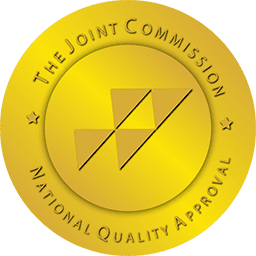- Home
- Treatment
Treatment Designed for You.
Get in touch with Absolute Awakenings today and begin your journey to long-term healing & recovery. - What We Treat
An Experience in Healing
Get in touch with Absolute Awakenings today and begin your journey to long-term healing & recovery. - About
The Rehab You've Been Looking For
Get in touch with Absolute Awakenings today and begin your journey to long-term healing & recovery. - Tour
- Resources
Don't Wait Another Day.
Get in touch with Absolute Awakenings today and begin your journey to long-term healing & recovery. - Admissions
The Rehab You've Been Looking For
Get in touch with Absolute Awakenings today and begin your journey to long-term healing & recovery. - Contact
(866) 627-0196
3000 NJ-10, Morris Plains, NJ 07950
admissions@absoluteawakenings.com
Schedule a Tour Now
Get in touch with Absolute Awakenings today and begin your journey to long-term healing & recovery.
Begin Your Journey Now
Begin Your Journey Now
- Home
- Treatment
Treatment Designed for You.
Get in touch with Absolute Awakenings today and begin your journey to long-term healing & recovery. - What We Treat
An Experience in Healing
Get in touch with Absolute Awakenings today and begin your journey to long-term healing & recovery. - About
The Rehab You've Been Looking For
Get in touch with Absolute Awakenings today and begin your journey to long-term healing & recovery. - Tour
- Resources
Don't Wait Another Day.
Get in touch with Absolute Awakenings today and begin your journey to long-term healing & recovery. - Admissions
The Rehab You've Been Looking For
Get in touch with Absolute Awakenings today and begin your journey to long-term healing & recovery. - Contact
(866) 627-0196
3000 NJ-10, Morris Plains, NJ 07950
admissions@absoluteawakenings.com
Schedule a Tour Now
Get in touch with Absolute Awakenings today and begin your journey to long-term healing & recovery.
Understanding the Length of Treatment
Treatment Timeline
- Written By: Amanda Stevens, B.S.
- Reviewed By: Dr. Po-Chang Hsu, M.D., M.S.
- Updated:
- Published:
- Reading Time: 5 minutes
- Absolute Awakenings Treatment Center
- Admissions
- Length of Treatment
For New Jersey residents seeking treatment for substance abuse & mental health conditions.
how treatment can help
A Better Forever BeginsToday
Navigating mental health and substance abuse challenges can be all-consuming. It’s difficult to know where to turn, what to expect, and how it will impact your life. We’re here to provide clarity and support through this process and help you begin your life anew.
how to know if treatment is right for me?
When It's Time to Consider Rehab
Before entering mental health or substance use disorder treatment, it’s helpful to have a firm grasp of what to expect. From the duration of treatment to daily or weekly schedules, understanding how it works helps to alleviate fears.
There are several different types of treatment programs available, and each will have a different timeline. Each client will receive an individualized treatment plan suited to their unique needs, and this plan will determine the duration of treatment.
In general, the treatment timelines fall into one of these four categories:
- 30-day programs
- 60-day programs
- 90-day programs
- Extended treatment programs, like sober living homes and halfway houses
The timeline will depend on the severity of your concerns, how committed to the recovery journey one is, and whether it’s necessary to work around work, school, or family obligations. However, most treatment plans fall in the middle at 60 or 90 days. Extended treatment programs include sober living homes and halfway houses.
We Get to Know You
The first step in the treatment process involves a thorough assessment conducted by healthcare professionals. This comprehensive evaluation not only diagnoses the nature and extent of the addiction but also identifies any co-occurring mental health conditions, such as depression or anxiety, that need simultaneous treatment. The assessment informs the creation of a personalized treatment plan tailored to the individual’s specific needs.
Safely Detox
Undergoing detox and remaining clean is essential for recovery success. This is particularly important for those with co-occurring disorders since diagnosis otherwise is generally so difficult. Mental health is a big factor in successful detox and recovery.
Begin Healing
Following detox, the focus shifts to addressing the underlying reasons behind the individual’s substance use, teaching new coping mechanisms, and preparing for the return to daily life. This stage can occur in various settings, including inpatient (or residential) and outpatient programs, depending on the level of care required. Rehabilitation involves a combination of therapies, which may include:
- Individual Counseling, such as Cognitive Behavioral Therapy (CBT), which helps modify the patient’s thinking, behavior, and emotional responses associated with substance use.
- Group Therapy to enhance social reinforcement from peer discussion and promote drug-free lifestyles.
- Family Therapy because family support can be an integral part of recovery and maintenance.
- Medical Treatment for co-occurring conditions such as depression or PTSD.
- Education about addiction as a disease and how to manage it.
- Life Skills Training, including job training, as part of an effort toward social rehabilitation.
Lifelong Support
Recovery from addiction is a lifelong process, and maintaining sobriety requires ongoing support. Aftercare programs and relapse prevention planning are critical aspects of this stage. They often include continued therapy (individual or group), support group meetings (such as 12-step programs), and sometimes sober living environments. These services are designed to provide the individual with a support network, coping strategies, and resources to help manage the challenges of life without returning to substance use.
what we can offer
A Breakdown of Our Treatment Programs
Each treatment timeline will take place within one of our evidence-based treatment programs. From Outpatient Programs and Intensive Outpatient to Partial Care day programs, we’re committed to providing the most suitable level of care based on each client’s needs.
Partial Day
The Partial Care day program (PC) is one of the most intensive and highly-structured programs offered. It requires the client to check in each day and stay for 6-8 hours. During this time, you will benefit from a comprehensive offering of counseling and therapy activities. For those that are battling severe mental health concerns, a serious addiction, or who have co-occurring disorders, a PCP will be the most appropriate choice.
Intensive Outpatient
The Intensive Outpatient Program (IOP) is a mid-tier program that takes place 10 to 20 hours each week, providing a more flexible approach than the PCP. It requires 3-4 visits each week for several hours of counseling and therapy sessions.
Outpatient
Outpatient Programs (OP) offer the most flexibility and only require a commitment of a few hours each week. This is the most effective option for a client who has already completed an IOP or PCP program and has established a significant level of personal autonomy.
Extended Programs
If you have recently completed a 90-day program or a residential program, you may desire additional care, guidance, and structure. Entering into an extended treatment program offers these enhanced care levels.
With a more structured living arrangement where peace and sobriety are supported and enforced, these affordable options help bridge the gap between long-term treatment and independent living.
Supportive Housing
Sober living facilities are private homes for clients who aren’t quite ready to fully reintegrate back into their daily lives. Care ranges from Level 1 homes that are run by a council of peers to Level 4 facilities that are constantly supervised and have a more institutional feel with access to counseling on-site.
a breakdown of our program offerings
Absolute Awakenings Programs
30 Day Rehab Program
The 30-day programs are a great fit for those getting started on their wellness and recovery journey or who may not know how long they should plan for. This program offers enough time to manage immediate symptoms and begin building coping and relapse-prevention skills without committing to too much time.
60 Day Rehab Program
The 60-day program provides additional support and therapy, giving the individual more time to work through whatever may arise during treatment. This mid-tier level of care is a better fit for those who may need a little more time to renew and reintegrate.
90 Day Rehab Program
Committing to a 90-day program is a significant investment, but this investment in yourself and your future is well worth the effort as it provides a solid foundation for recovery. When completed, it also supports the highest chance of success and the greatest exposure to helpful therapy techniques.
- Individual Counseling, such as Cognitive Behavioral Therapy (CBT), which helps modify the patient’s thinking, behavior, and emotional responses associated with substance use.
- Group Therapy to enhance social reinforcement from peer discussion and promote drug-free lifestyles.
- Family Therapy because family support can be an integral part of recovery and maintenance.
- Medical Treatment for co-occurring conditions such as depression or PTSD.
- Education about addiction as a disease and how to manage it.
- Life Skills Training, including job training, as part of an effort toward social rehabilitation.
Stories of Hope & Healing
Hear from Our Alumni
A jewel among many local drug and alcohol rehab treatment centers in Denville, New Jersey, the care and treatment options you’ll receive at Absolute Awakenings is second to none. From not knowing if you’ll ever feel in control again to being confident in the path you’re on, we are invested in YOU every step of the way.
begin healing today
How to Get Started
If you or a loved one is struggling with mental health or substance use challenges, the best first step is to speak with a professional. Together, we’ll confidentially discuss your treatment needs and begin building a treatment plan that is customized to your needs.
© Copyright 2024. All Rights Reserved. AATC.
- Terms & Conditions
- Privacy Policy


